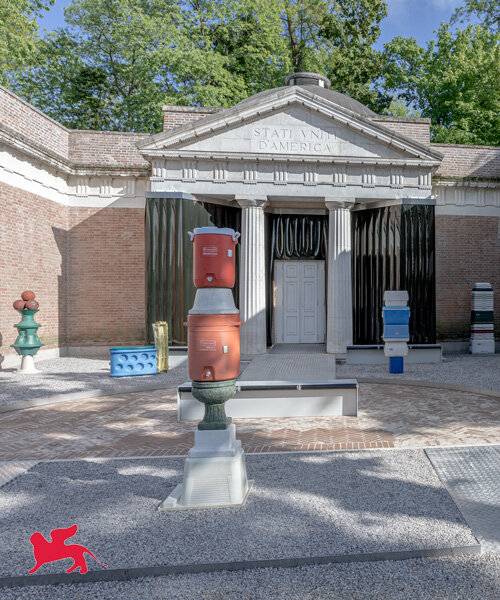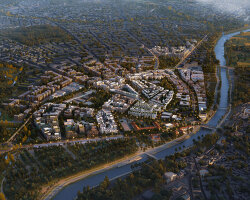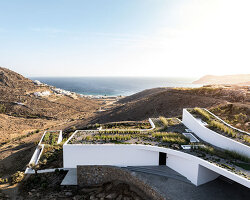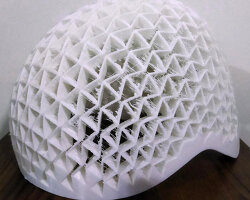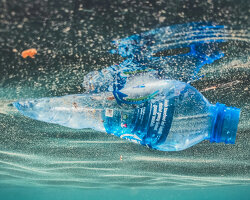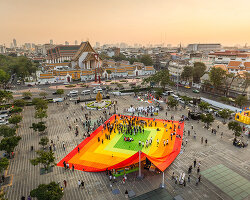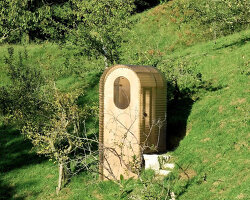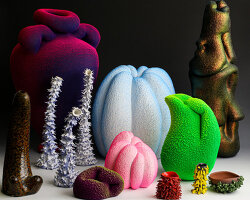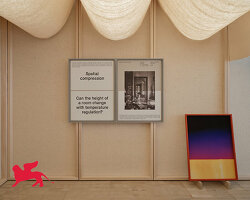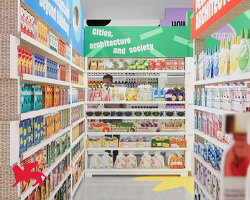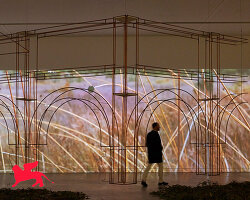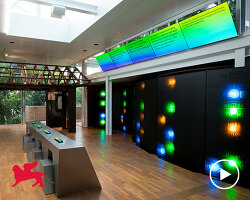US pavilion reclaims plastic waste for creative solutions
Responding to Lesley Lokko’s theme, The Laboratory of the Future, the US Pavilion at the 18th Venice Architecture Biennale delves into the complexities of plastic and its impact on production, resources, and representation in the context of the nation. Curated by Tizziana Baldenebro and Lauren Leving, the exhibition titled Everlasting Plastics challenges our wasteful reliance on single-use materials, offering alternative perspectives on the lifecycle and role of plastics in architecture and design.
Amid the climate crisis, the US Pavilion encourages collective reimagining of consumption and production by presenting interventions and novel reinterpretations of plastic waste. From Simon Anton’s recreation of an iron window grille with confetti shredded from plastic waste from Detroit, to Lauren Yeagar’s sculpture crafted from discarded items from around Cleveland, the pavilion creates a portrait of the city while calling for a more sustainable future. ‘The works on view expand extant narratives and make us conscious of the silent and unconscious ways we’ve employed plastics as a material,’ Baldenebro tells designboom. Reframing global problems into conscious design solutions, these installations provoke reflection on our finite resources while paving the way for a more sustainable and inclusive creative future. Read on for the full conversation as co-curator Tizziana Baldenebro talks us through the key themes of the pavilion, expands on the ways in which American artists are repurposing plastic, and uncovers alternative perspectives on current global approaches to wasteful consumption.
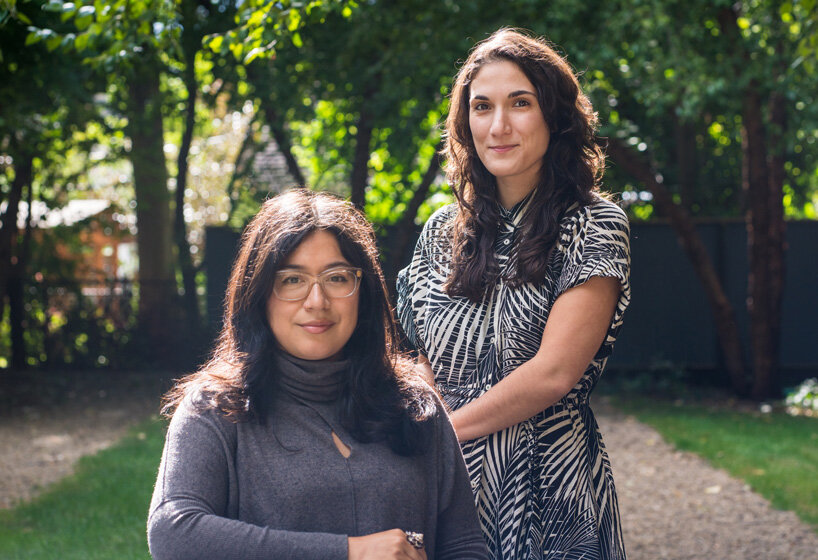
Tizziana Baldenebro (left) and Lauren Leving (right) — co-curators of Everlasting Plastics | image by McKinley Wiley
interview with tizziana baldenebro on ‘everlasting plastics’
designboom (DB): How does the pavilion tackle this year’s theme, Laboratory of the Future? What key concepts does it explore?
Tizziana Baldenebro (TB): Lesley Lokko spotlights Africa and the African Diaspora in The Laboratory of the Future, drawing attention to a multiplicity of voices and unpacking what it means to be ‘an agent of change,’ while challenging, ‘the dominant voice [in architecture that] has historically been a singular exclusive voice, whose reach and power ignores huge swaths of humanity.’ Her work expands architectural discourse, questioning modes of production, resources, and representation that are often ignored or erased.
In this same way, we have chosen to closely examine plastic. While plastic is a globally ubiquitous material, it hides in plain sight. It insulates our homes, serves as a productive barrier, and acts as a carrier — both as a vessel and as a virus. Everlasting Plastics brings these tensions to the forefront and more explicitly engages with the theme of The Laboratory of the Future through one of the practitioners with whom we are working, Norman Teague. He uses Everlasting Plastics as a laboratory for his practice. While he has received a lot of acclaim for his work with wood, we’ve challenged him for this installation to work with recycled plastic, to rethink materiality. His work considers the Global South and the Global North through a diasporic lens and critique of Western extractivist practices in the Global South.
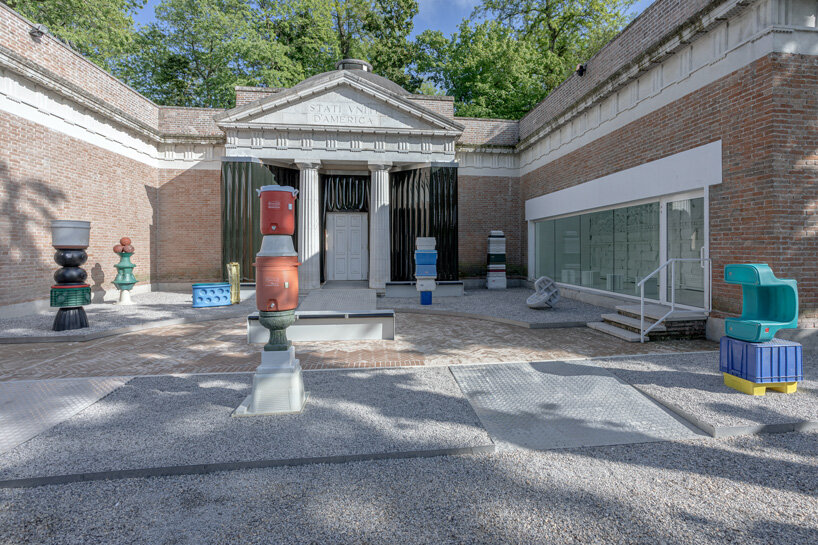
the pavilion delves into the impact of plastic on production, resources, and representation in the USA
Lauren Yeager, Longevity | image by ReportArch / Andrea Ferro Photography
We came to our investigation of plastic through our region. Petrochemical polymers were perfected in the US, and more specifically in the Midwest, where we — the curators and all five exhibitors — currently or have previously lived and worked. I was first inspired to develop the initial iteration of this project in 2018 during studio visits with artists and designers in Chicago and Detroit who were exploring waste streams, methods of material reuse, and our physical relationships with plastic refuse. These conversations grew to encompass plasticity and how plastic’s mutability has informed our expectations of the behaviors of other materials. We live in a society that once prioritized and is now evaluating our dependence on single-use plastics in an attempt to move away from a culture of disposability. Plastic has a relatively short history but now we are reliant on the material. How do we live within this abundance of waste?
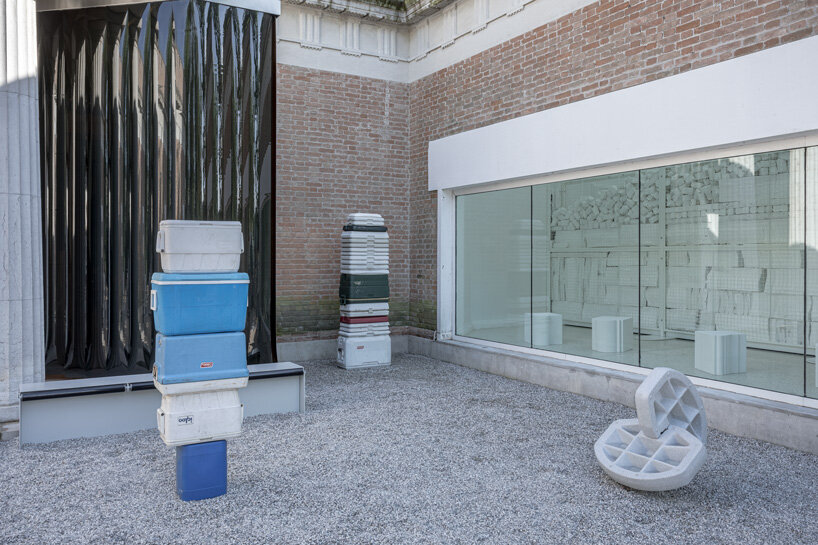
amid the climate crisis, Everlasting Plastics encourages collective reimagining of consumption and production
Lauren Yeager, Longevity | image by ReportArch / Andrea Ferro Photography
DB: How does the pavilion offer alternative perspectives on the lifecycle and role of plastics in architecture and design?
TB: The works on view expand extant narratives and make us conscious of the silent and unconscious ways we’ve employed plastics as a material. Ang Li’s installation, for example, renders visible polystyrene, a material we often gloss over as we use it to line our walls or hold our take out. This material is hard to reuse or recycle because of the volume it requires, so it goes straight to landfills and comprises approximately 30 percent of US landfills. Meanwhile, Xavi Aguirre expands on a metaphorical use of proofing, a sealant layer that is often made of plastics. Proofing layers make us both ready and resistant and, when properly deployed, can most effectively, ecologically, and efficiently protect us from the elements. Plastic emerged as a solution to protect the environment, replacing ivory, tortoiseshell, animal furs, and more. But as we began to shift plastic use and consumption toward disposability and single use, we began to apply this mentality to more and more materials. Our issue is with consumption — all of the resources we consume are finite, and we need to understand this.
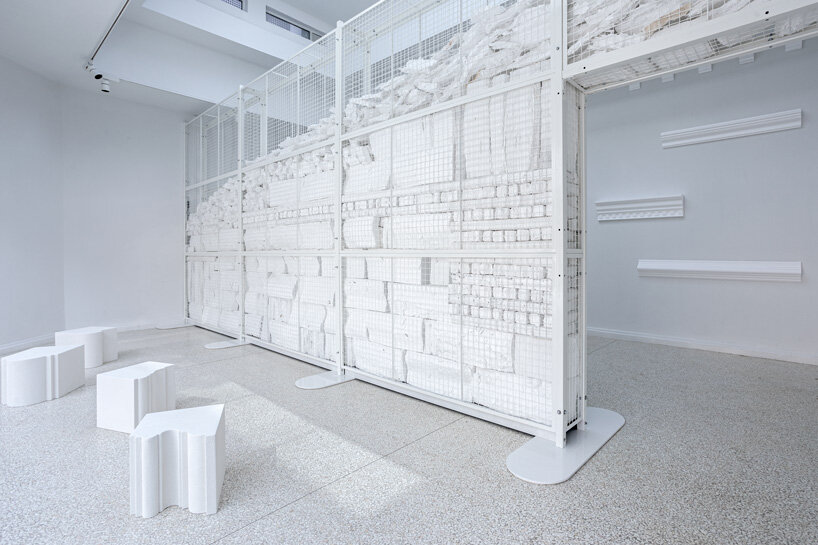
Tizziana Baldenebro and Lauren Leving challenge our wasteful reliance on single-use materials
Ang Li, Externalities | image by ReportArch / Andrea Ferro Photography
DB: Can you tell us about some of the installations that demonstrate sustainable (re)use of plastic as an art medium?
TB: We approached this project as a synthesis of art and architecture. Artistic thinking, applied architecturally, has greater capacity to speak to audiences, while art applied at the scale of architecture has greater capacity to confront audiences. So we believe that these fields should be in close dialogue. Simon Anton, for example, considered architectural ornamentation. In one piece he uses the window grille at the Federal Reserve Bank as inspiration, reinterpreting it with plastic confetti bits made of shredded waste collected from his hometown of Detroit. In this way, the work speaks to the inextricable connection between our nation’s economic policies and plastic consumption and production streams. Lauren Yeager’s sculptures in the courtyard, made of discarded items from around Cleveland, create this portrait of a city. Reclaiming these objects reframes waste and refuse in a poetic way.
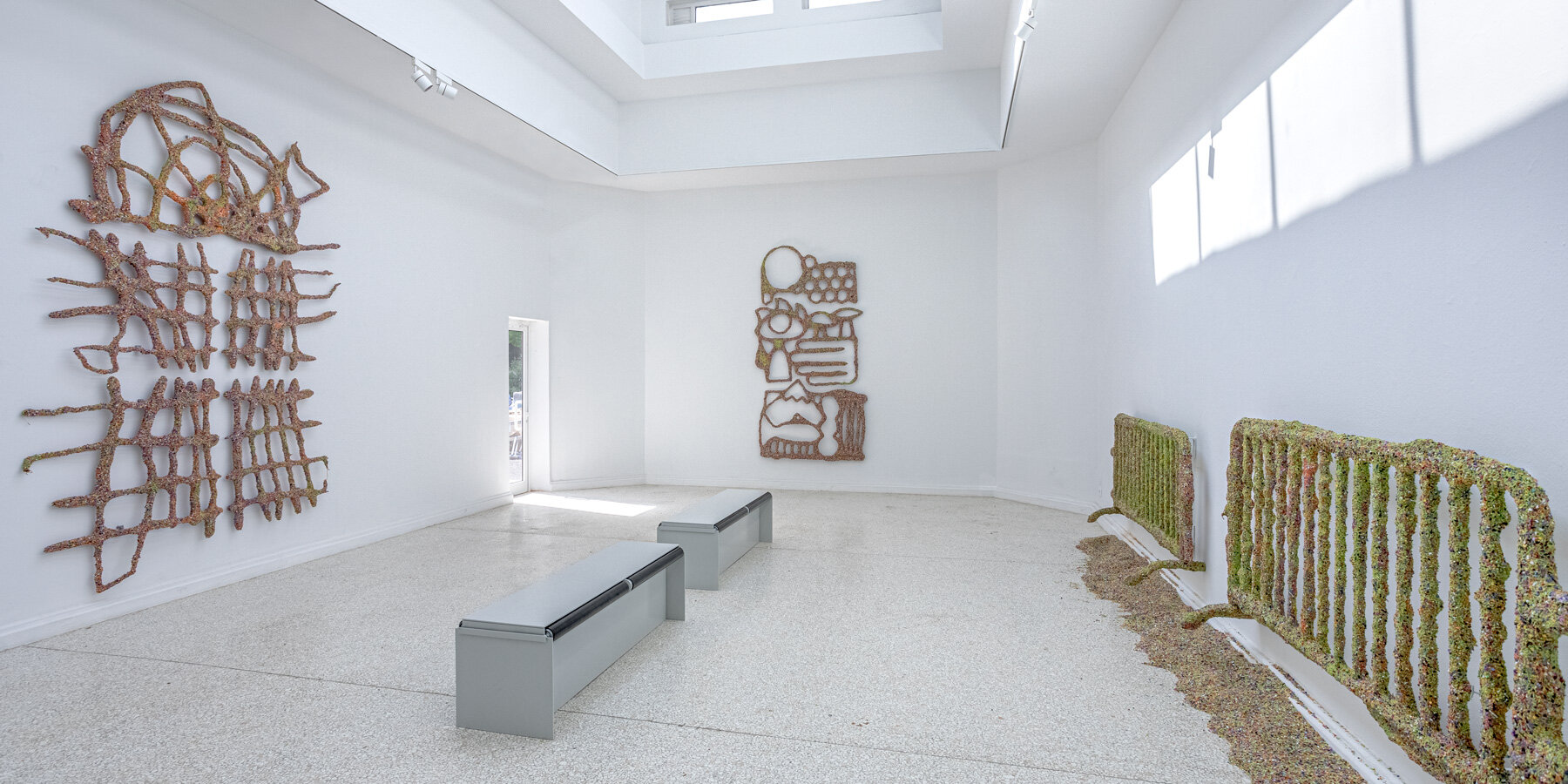
Everlasting Plastics is shaped as a synthesis of art and architecture | Simon Anton, This Will Kill___That | image by ReportArch / Andrea Ferro Photography
DB: Given the theme of the future, what are some of the most innovative design processes and materials showcased in the pavilion?
TB: The deepest innovation is in how everyone is choosing to re-envision these materials — as a way of rethinking our consumption and production streams. None of the materials are new or new inventions, but rather interventions and new interpretations of how these materials can be made visible.
DB: Are you optimistic about the future? How do you hope your pavilion contributes to this vision?
TB: My co-curator Lauren Leving and I are both millennials, and we have one of the youngest teams, in general, to show in the US Pavilion. Our generation has a lot of eco-nihilism, but fundamentally, this project hopes to learn from past ways of thinking. By reframing the problems, we hope to amplify collective ways we approach solutions. While I was at School of the Art Institute Chicago, I participated in Designer, Artist, Citizen, Site, a partner program of Dimensions of Citizenship, the theme of the 2018 US Pavilion. I learned to think about critically necessary nuances within these larger conversations — it’s not clear-cut or definitive, and we ultimately need to understand the complexity to find ways to move forward.
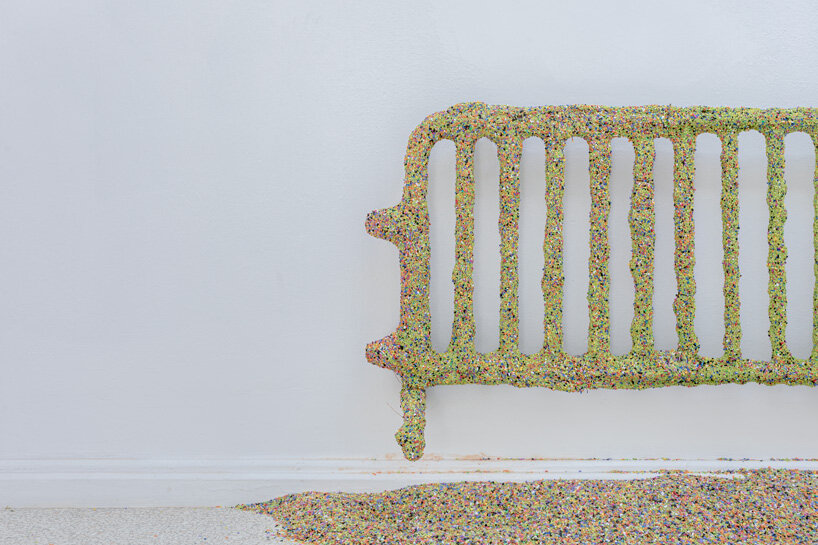
the works make us conscious of the silent and unconscious ways we’ve employed plastics as a material
Simon Anton, This Will Kill___That | image by ReportArch / Andrea Ferro Photography
DB: Can you talk us through the architectural and spatial strategies of the pavilion and what they signify?
TB: We worked with two incredibly talented exhibition designers, Faysal Altunbozar and Chloe Munkenbeck. We wanted to use the pavilion in unexpected ways, which included using the main entrance as, well, an entrance. That, in turn, created a circulation that forced people to retrace or revisit parts of the pavilion they had seen. Faysal and Chloe centered accessibility, ensuring seating and walkability throughout the pavilion. Even the courtyard extended into the public space, blurring the boundaries.
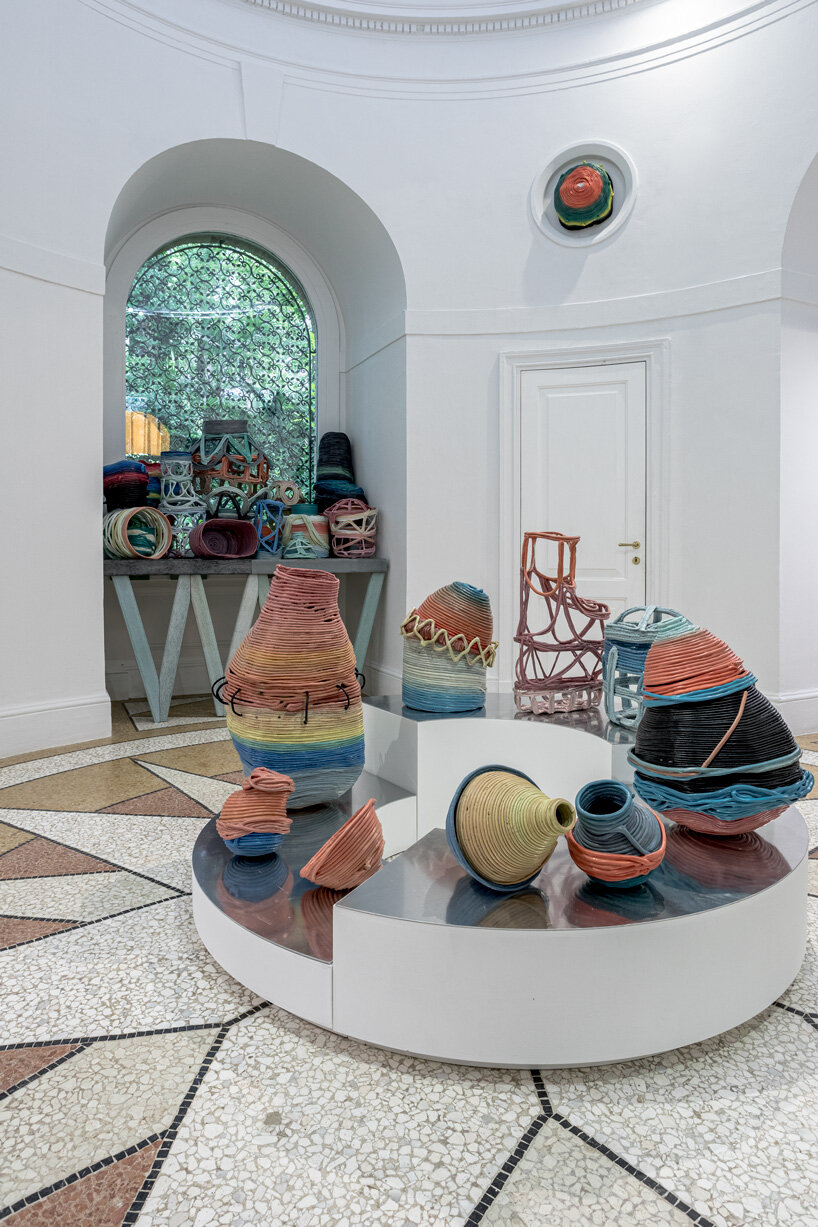
the spatial strategy creates a circulation that forces people to retrace or revisit parts of the pavilion
Norman Teague, Re+Prise | image by ReportArch / Andrea Ferro Photography
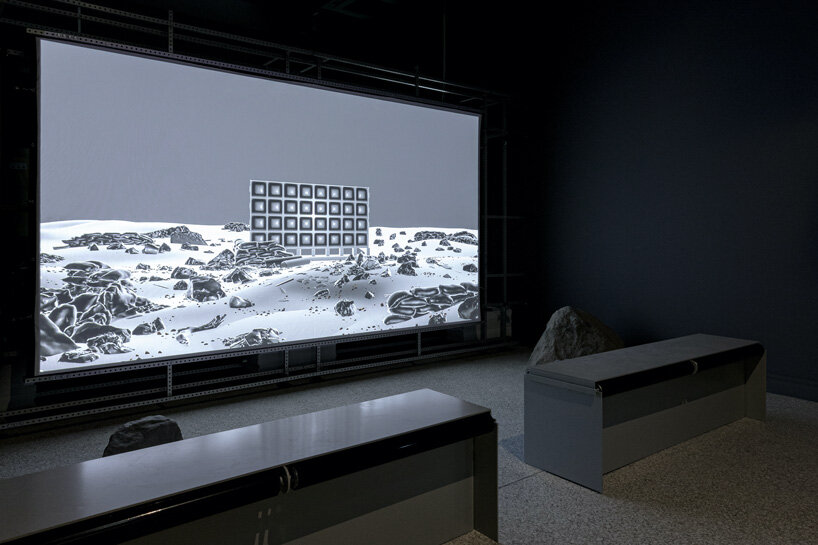
‘the deepest innovation is in how everyone is choosing to re-envision these materials’
Xavi L. Aguirre, PROOFING | image by ReportArch / Andrea Ferro Photography
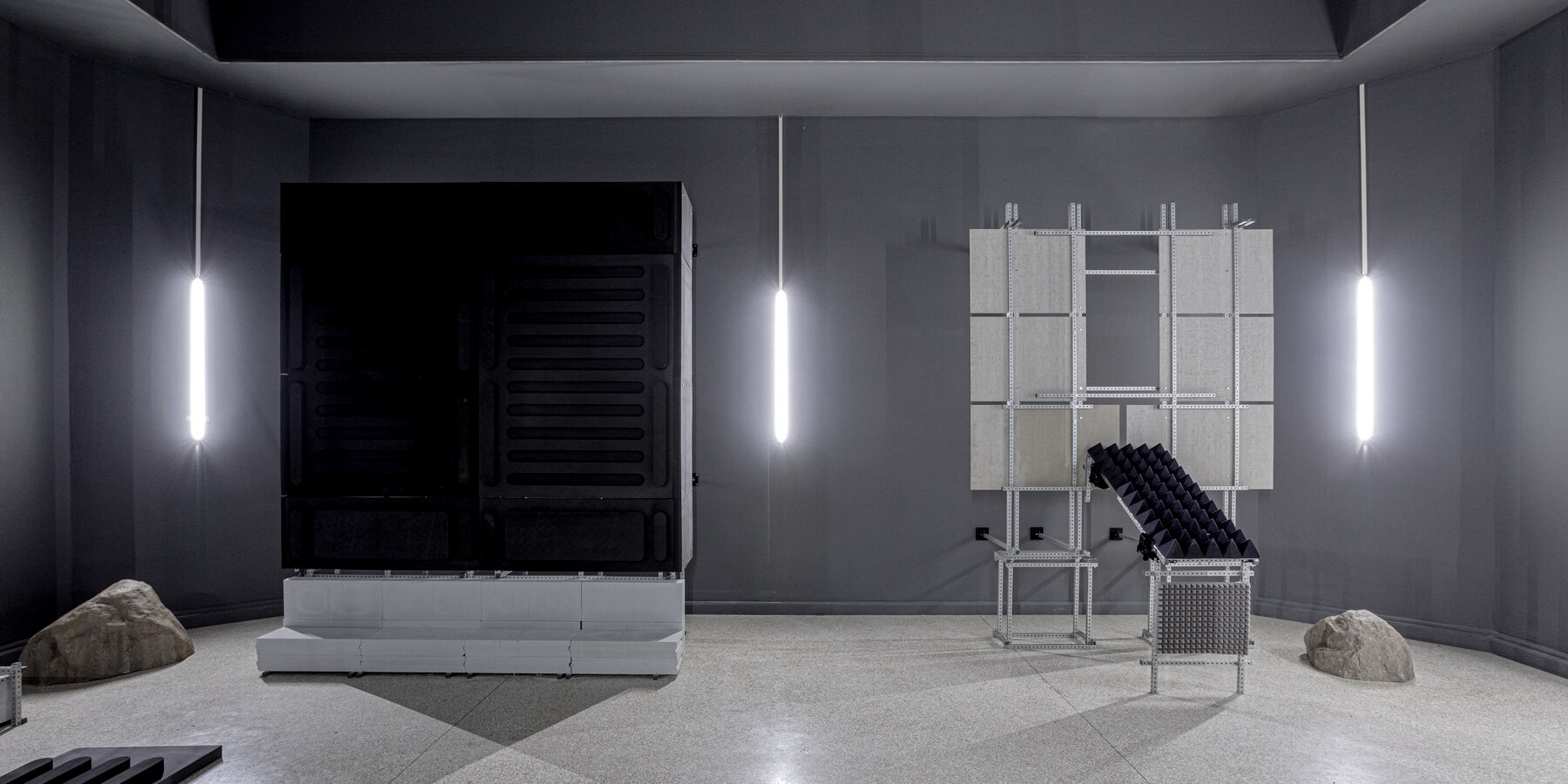
the US pavilion tackles the Venice Architecture Biennale’s theme, The Laboratory of the Future | Xavi L. Aguirre, PROOFING | image by ReportArch / Andrea Ferro Photography
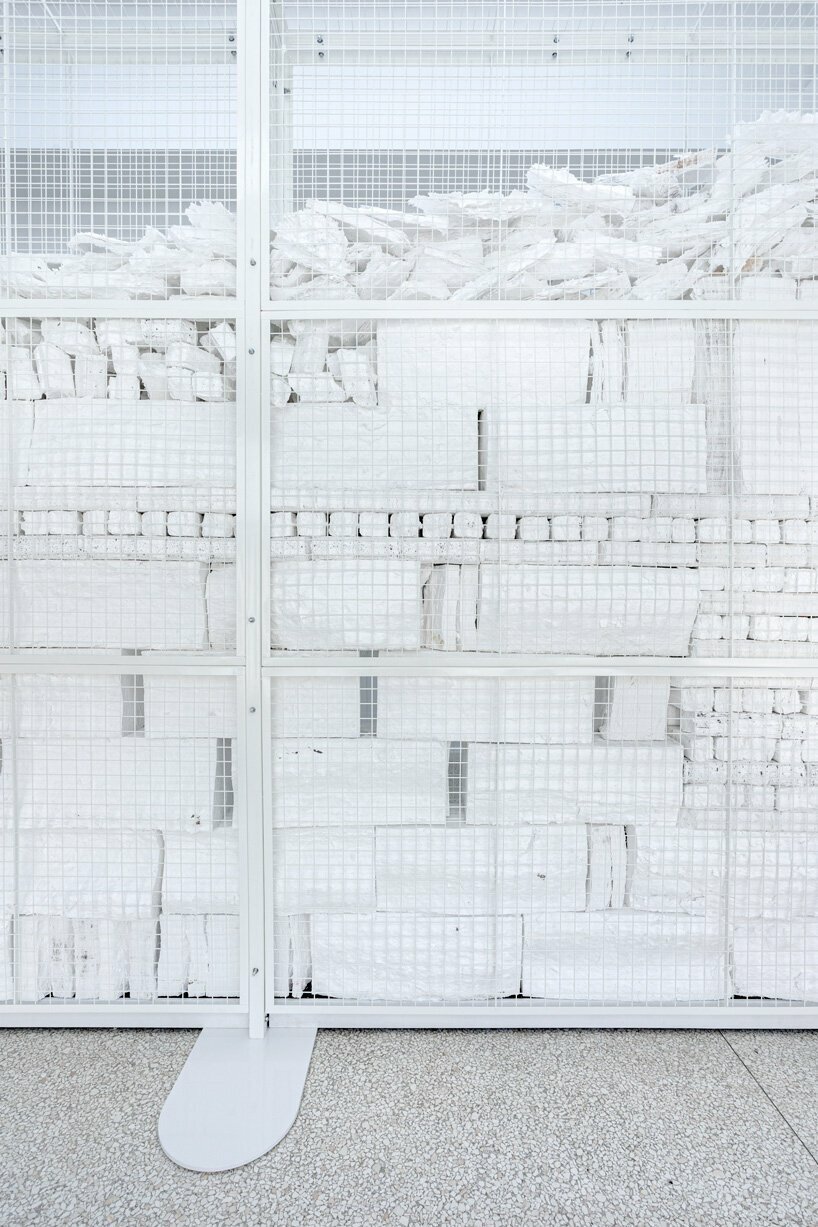
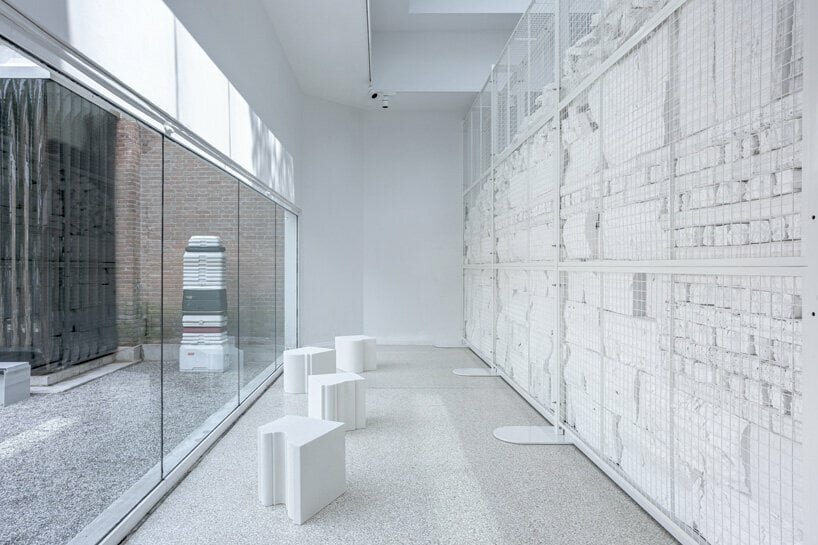
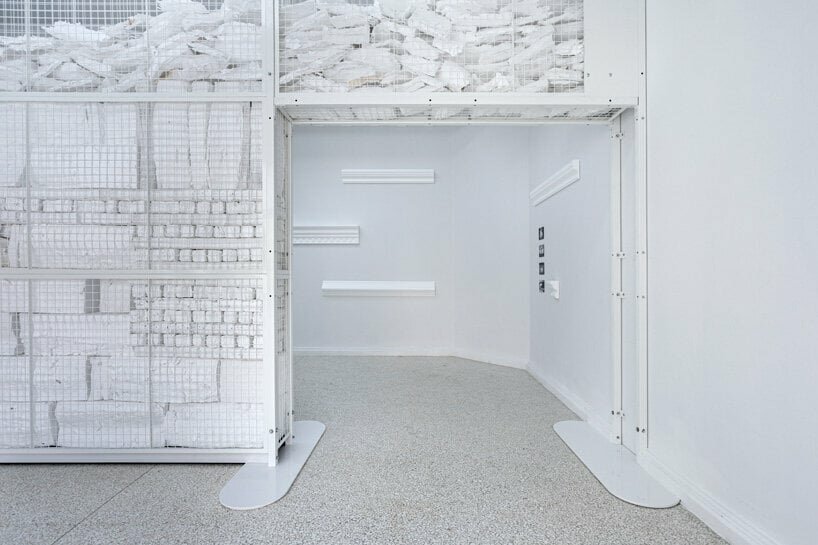
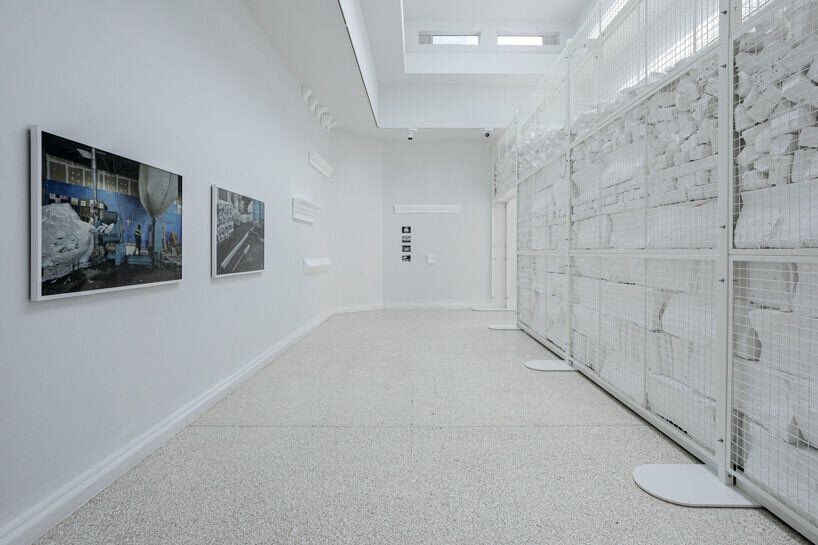
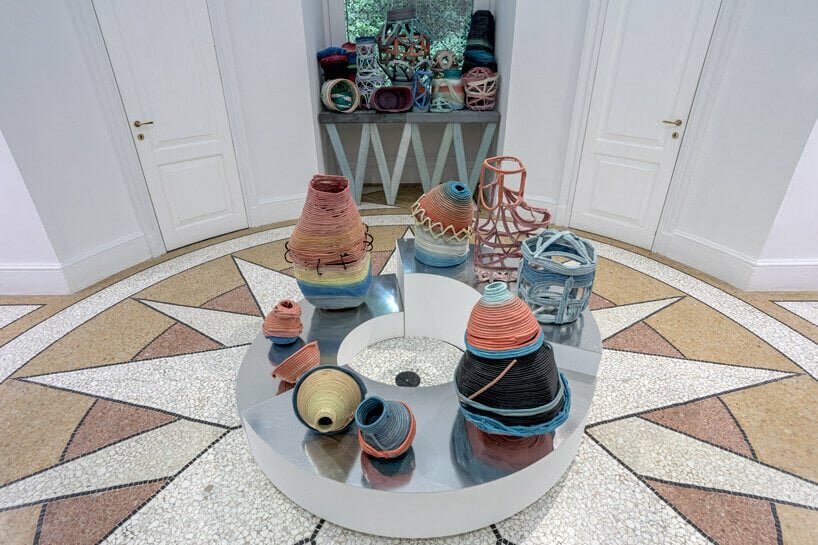
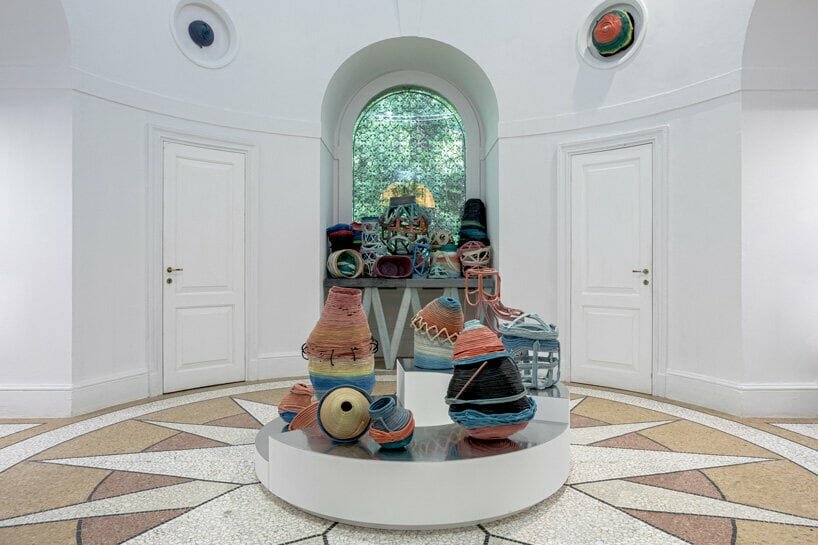
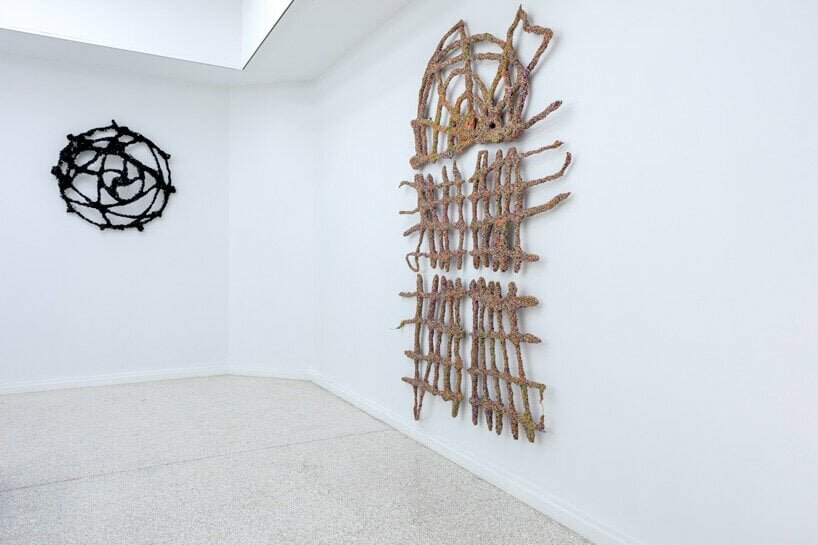
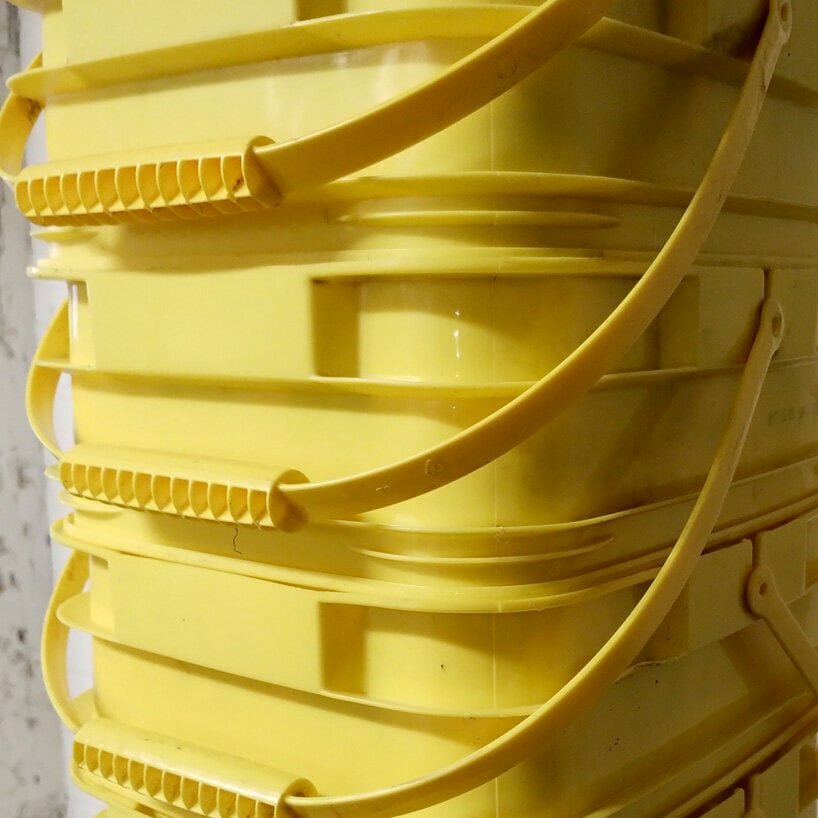
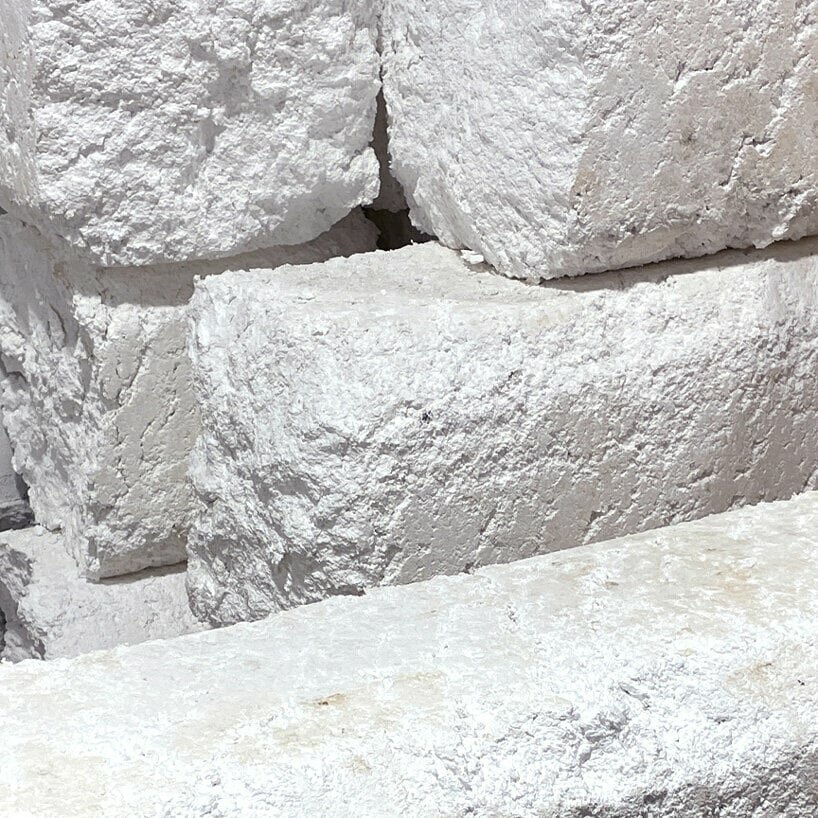
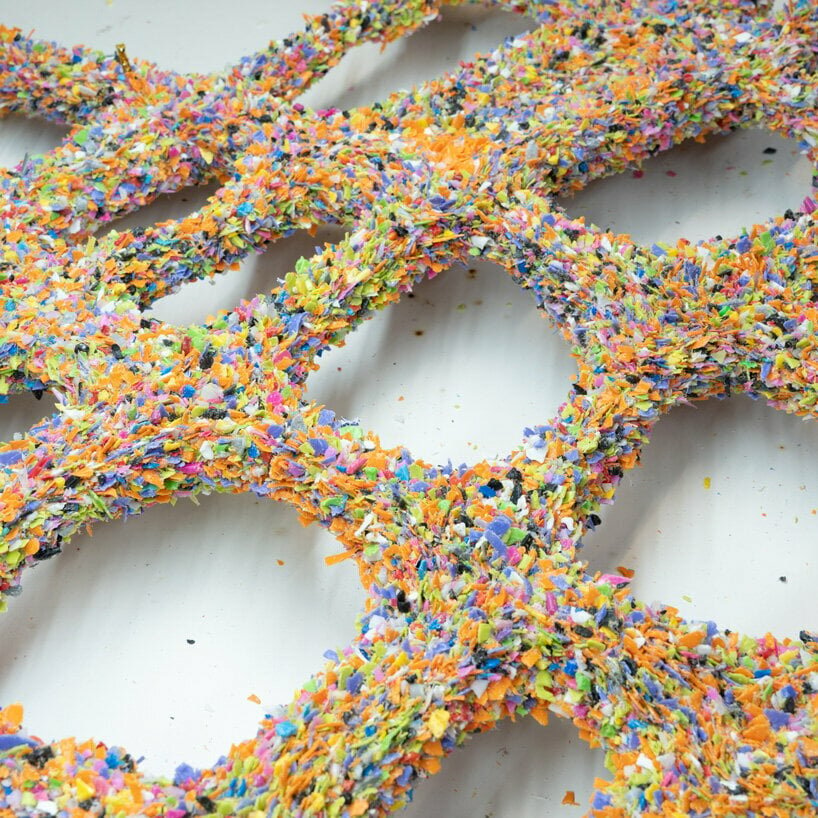
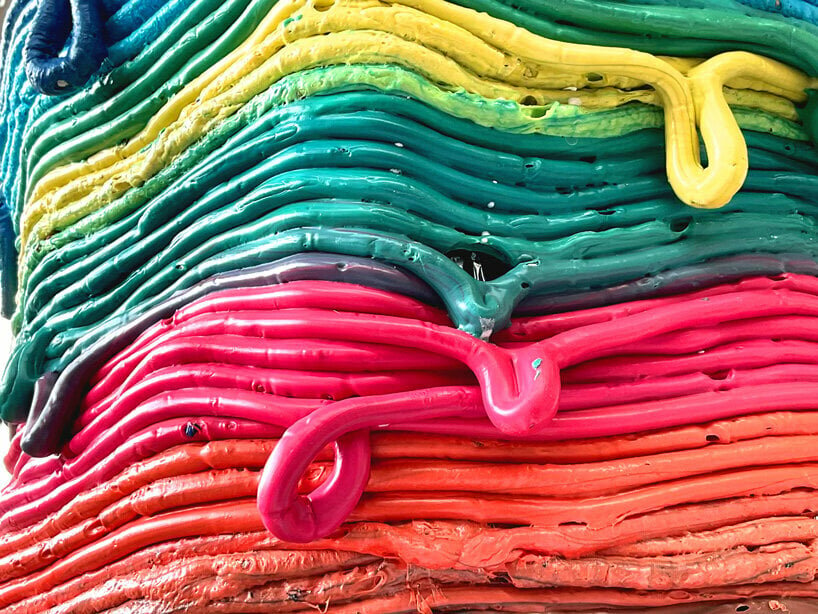
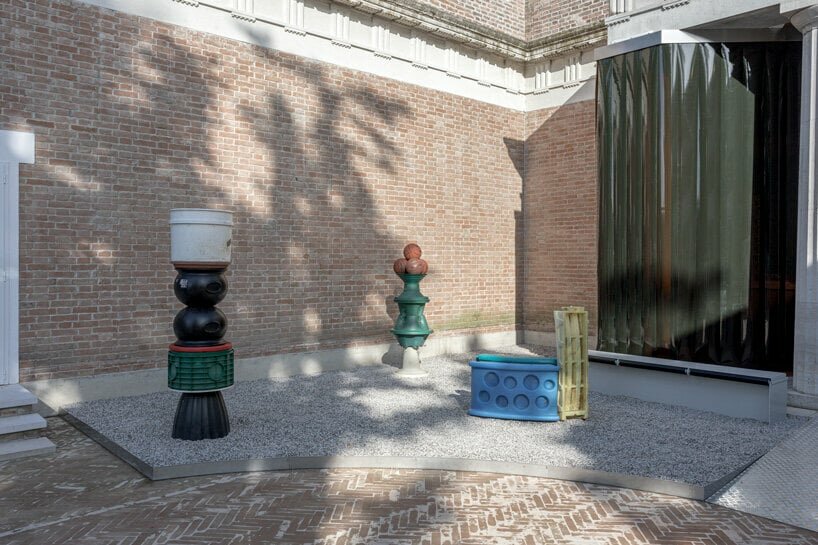
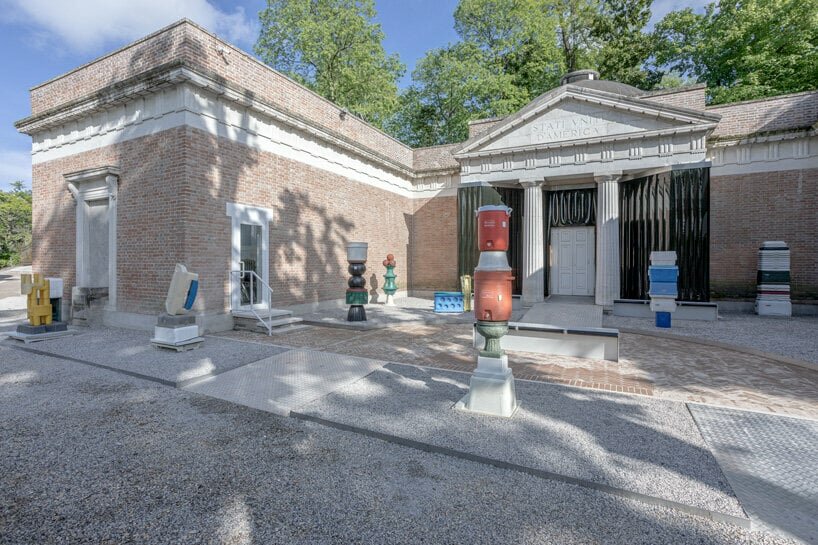
project info:
name: US Pavilion | Everlasting Plastics
event: Venice Architecture Biennale 2023
location: Giardini della Biennale, Venice, Italy
commissioner and co-curator: Tizziana Baldenebro, Executive Director, SPACES
co-curator: Lauren Leving, Curator, Museum of Contemporary Art Cleveland
designers: Xavi L. Aguirre, Simon Anton, Ang Li, Norman Teague, Lauren Yeager
exhibition design: Faysal Altunbozar, Chloe Munkenbeck
organizer: SPACES
Explore designboom’s ongoing coverage of the 2023 Venice Architecture Biennale: The Laboratory of the Future here, and follow our dedicated channel on Instagram here.
